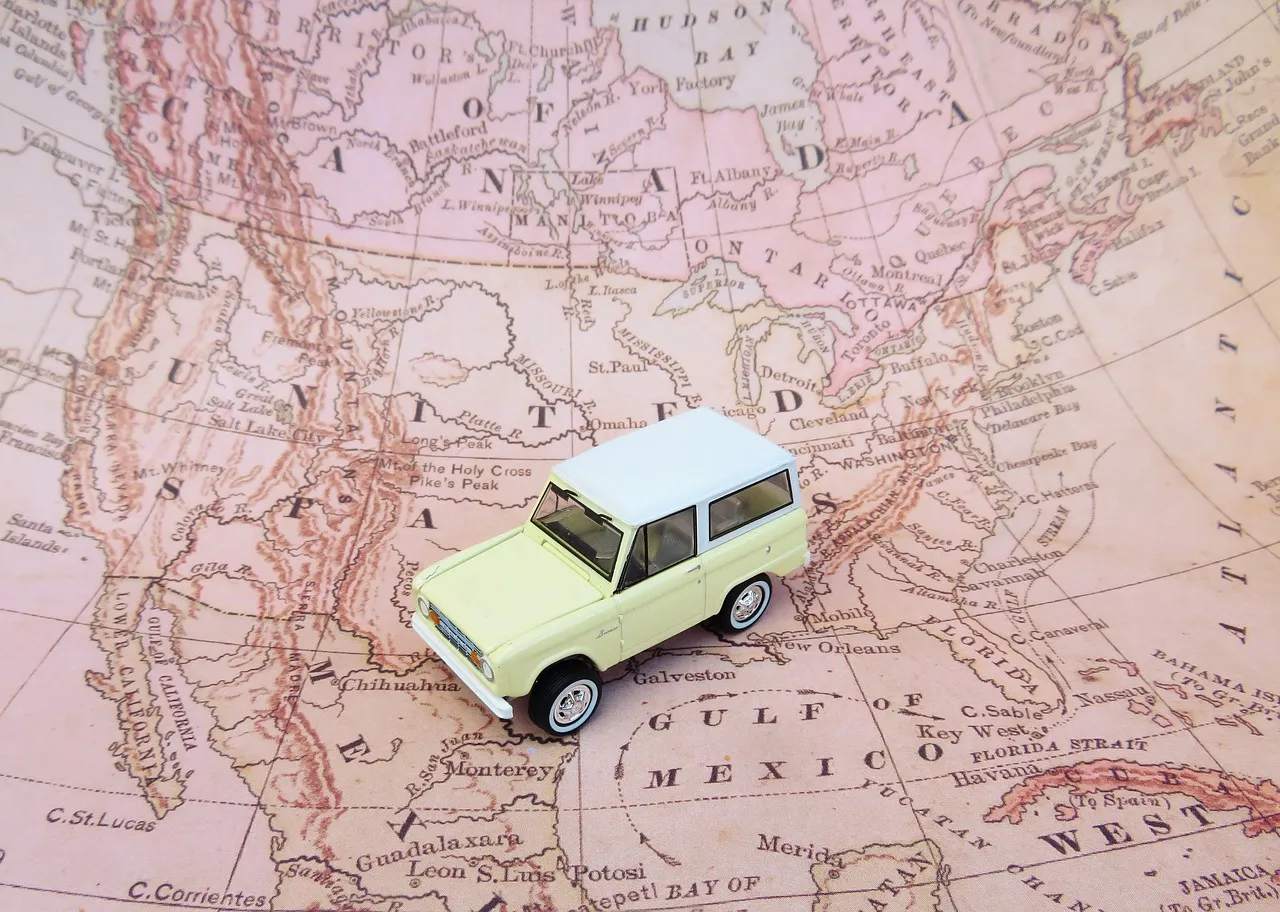California Vs Texas: Which State Is Bigger?
California and Texas are two massive U.S. states with larger-than-life reputations. But which state is actually bigger in sheer land area?
If you’re short on time, here’s a quick answer to your question: Texas is the larger state, with 268,597 square miles compared to California’s 163,694 square miles.
In this in-depth guide, we’ll look at the total land area, population, economic production, and geographic diversity of California and Texas. By comparing key statistics and superlatives, you’ll get a clear picture of how these two behemoth states stack up in size and more.
Total Land Area
California’s total square mileage
When it comes to land area, California is an impressive state. Covering approximately 163,696 square miles, it is the third-largest state in the United States. To put this into perspective, California is larger than many countries around the world, including Germany and Japan.
Its diverse landscape ranges from stunning coastline to towering mountains and sprawling deserts. It’s no wonder that California is known for its breathtaking natural beauty.
Texas’ total square mileage
However, when it comes to sheer size, Texas takes the lead. With a total land area of approximately 268,597 square miles, it is the second-largest state in the United States, surpassing California by a significant margin.
To give you an idea of its vastness, Texas is larger than Germany and Japan combined. It is often said that “everything is bigger in Texas,” and the state’s land area certainly lives up to that reputation.
For a visual comparison of the land areas of California and Texas, take a look at the table below:
| California | Texas | |
|---|---|---|
| Land Area (square miles) | 163,696 | 268,597 |
As you can see, Texas has a substantial advantage when it comes to land area. However, it’s important to note that land area alone does not determine the overall size or significance of a state. Other factors such as population, economy, and cultural influence also play a crucial role in defining a state’s importance.
If you’re interested in learning more about the land areas of California and Texas, you can visit the official websites of the California Department of Conservation (https://www.conservation.ca.gov/) and the Texas General Land Office (https://www.glo.texas.gov/) for more detailed information.
Population
California’s resident population
California, also known as the Golden State, is renowned for its diverse population. As of 2021, California has an estimated resident population of approximately 39.5 million people, making it the most populous state in the United States.
With its vibrant cities, beautiful coastlines, and opportunities for economic growth, it’s no wonder that so many people choose to call California home. The state’s population continues to grow steadily, with a net increase of over 2 million residents between 2010 and 2020.
Texas’ resident population
Everything is bigger in Texas, including its population. With its vast land area and booming economy, Texas is the second most populous state in the United States. As of 2021, the Lone Star State is estimated to have a resident population of around 29 million people.
Texas has experienced significant population growth in recent years, attracting people from all over the country with its job opportunities, affordable housing, and wide range of recreational activities. Between 2010 and 2020, Texas added over 4 million residents to its population.
Comparing the population of California and Texas, it’s clear that both states have substantial numbers of residents. While California has a larger population overall, Texas has been experiencing rapid growth and may eventually catch up.
Factors such as job opportunities, cost of living, and quality of life play a significant role in attracting people to these states.
For more information on California’s population, you can visit the official website of the U.S. Census Bureau. To learn more about Texas’ population, you can visit the official website of the U.S. Census Bureau.
Economic Production
California’s GDP and key industries
California’s economy is one of the largest in the world, with a Gross Domestic Product (GDP) that rivals many countries. In fact, if California were an independent nation, it would rank as the fifth largest economy in the world. Its GDP in 2020 was approximately $3.2 trillion.
California’s key industries contribute significantly to its economic production. The state is renowned for its thriving technology sector, with Silicon Valley being the epicenter of innovation and home to many of the world’s leading tech companies.
The entertainment industry, centered in Hollywood, also plays a crucial role in California’s economy, generating billions of dollars in revenue each year. Additionally, agriculture, aerospace, tourism, and renewable energy sectors are major contributors to the state’s economic output.
Texas’ GDP and key industries
Texas is known for its strong economy, which is heavily reliant on various industries. With a GDP of approximately $1.9 trillion in 2020, the Lone Star State holds the second position in terms of economic output among all U.S. states.
When it comes to key industries, Texas boasts a diverse economic landscape. The state is a leader in the energy sector, primarily due to its abundant oil and natural gas reserves. The oil industry has been a significant driver of Texas’ economic growth for decades.
Additionally, Texas has a thriving manufacturing industry, particularly in sectors such as aerospace, electronics, and petrochemicals. The state also has a robust agricultural sector, with cattle and cotton being prominent contributors.
It is important to note that both California and Texas have distinct advantages and contribute significantly to the overall economic production of the United States. Comparing the two states in terms of GDP and key industries showcases their unique strengths and contributions to the nation’s economy.
Geographic Diversity
When comparing the geographic diversity of California and Texas, it’s important to understand the various regions that make up each state. Both California and Texas are known for their vast size and diverse landscapes, but they differ in terms of the specific regions they encompass.
California’s geographic regions
California is often referred to as the “Golden State” due to its diverse geography and natural beauty. It can be divided into several distinct regions:
- The Sierra Nevada mountain range runs along the eastern side of the state and is home to iconic landmarks like Yosemite National Park and Lake Tahoe, offering breathtaking views and outdoor recreational opportunities.
- The Central Valley is an expansive agricultural region that stretches between the Sierra Nevada and the Coastal Ranges. It is known for its fertile soil and is a major contributor to the state’s agricultural industry.
- The Coastal Ranges run parallel to the Pacific Ocean and are characterized by rugged cliffs, picturesque beaches, and dense forests. The famous Pacific Coast Highway winds along this scenic coastline, offering stunning views.
- The Mojave Desert occupies the southeastern part of the state and is known for its arid landscapes, sand dunes, and unique flora and fauna.
- The San Francisco Bay Area is a vibrant metropolitan region that includes cities like San Francisco, Oakland, and San Jose. It is known for its diverse culture, technological innovation, and iconic landmarks like the Golden Gate Bridge.
Source: visitcalifornia.com
Texas’ geographic regions
Just like California, Texas boasts a wide range of geographic regions that contribute to its unique character:
- The Gulf Coast region stretches along the southeastern coast of the state and offers beautiful beaches, marshlands, and diverse wildlife.
- The Hill Country is characterized by rolling hills, picturesque rivers, and charming small towns. It is a popular destination for outdoor activities such as hiking, fishing, and tubing.
- The Panhandle Plains encompass the northernmost part of Texas and are known for their wide-open spaces, prairies, and cattle ranches.
- The Piney Woods region is located in the eastern part of the state and is characterized by dense forests, lakes, and abundant wildlife.
- The West Texas region is vast and sparsely populated, with arid landscapes, desert areas, and unique geological formations like the famous Big Bend National Park.
Source: traveltexas.com
So, when comparing California and Texas in terms of geographic diversity, it is clear that both states offer a wide range of landscapes and natural attractions. Whether you prefer the stunning coastline of California or the rugged beauty of Texas’ Hill Country, there is something for everyone to enjoy in these two great states.
Other Superlatives
Notable size rankings for California
California is not only the largest state in terms of land area but also boasts several other impressive size rankings. Let’s take a look at some of them:
- Population: California is the most populous state in the United States, with over 39 million residents. Its population is larger than that of many countries around the world.
- Gross Domestic Product (GDP): California has the largest GDP among all the states, contributing significantly to the overall economy of the United States. In fact, its economy is often compared to that of entire countries.
- Coastline: With approximately 840 miles of coastline along the Pacific Ocean, California has the longest coastal stretch of any state in the country. Its beautiful beaches and stunning coastal views attract millions of visitors each year.
- National Parks: California is home to the largest number of national parks in the United States, including iconic destinations such as Yosemite National Park, Joshua Tree National Park, and Redwood National and State Parks.
These protected areas showcase the state’s diverse landscapes and natural beauty.
For more detailed information on California’s size rankings and other interesting facts, you can visit the official website of the U.S. Census Bureau.
Notable size rankings for Texas
While Texas may not be as large as California in terms of land area, it still holds several notable size rankings. Here are some interesting facts about the Lone Star State:
- Population: Texas is the second most populous state in the United States, with a population of over 29 million people. Its rapid population growth is attributed to factors such as job opportunities, affordable housing, and a diverse culture.
- Economy: Texas has the second largest GDP among all the states, demonstrating its strong economic presence. The state’s economy is driven by industries such as oil and gas, technology, agriculture, and manufacturing.
- Energy production: Texas is the largest producer of oil and natural gas in the United States. Its vast energy reserves and infrastructure make it a significant player in the global energy market.
- Cattle industry: Known for its cowboy culture, Texas has the largest cattle industry in the country. The state’s wide-open spaces and favorable climate provide ideal conditions for raising livestock.
For more information on Texas’s size rankings and other interesting facts, you can visit the official website of the Texas.gov.
Conclusion
While both behemoth states, Texas emerges as larger than California by over 100,000 square miles. However, California bests Texas in population and economic output. Both states vary vastly in landscape, from mountains to deserts to lush forests.
In terms of sheer land mass alone, Texas stands out as the clear winner. But both states have mammoth economies and populations that reflect their larger-than-life reputations.








